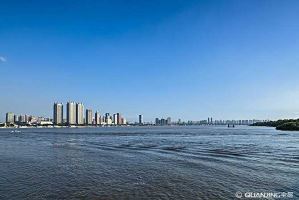重庆磁器口导游词
Hello, everyone. Welcome to Chongqing, the capital of mountains and rivers.I'm Luo __, the tour guide of Chongqing. You can call me Xiao Luo or LuoDao.
Chongqing is located in Southwest China, the upper reaches of the YangtzeRiver, the eastern edge of Sichuan Basin, Hubei and Hunan in the East, Guizhouin the south, Sichuan in the West and Shaanxi in the north. Chongqing is 470kilometers long from east to west and 450 kilometers wide from north to south,with a total area of 8. 240000 square kilometers, the largest city in China,with a population of 29.45 million. Chongqing has built its capital three timesin history. It is also a famous mountain city, water city, bridge city and hotspring city. As for Chongqing, there are Daba Mountain in the north, Wushanmountain in the East, Wuling Mountain and Dalou mountain in the southeast. Thealtitude difference is huge and undulating. It can be said that there is a cityin the mountains and a mountain in the city. It is a mountain city worthy of thename. At the same time, in the Chongqing section of the main stream of theYangtze River, there are hundreds of small rivers such as Jialing River, QujiangRiver, Fujiang River, Wujiang River and Daning River, together with ChangshouLake, Xiaonanhai lake, Qinglong lake and other lakes, making the annual averagetotal water resources of Chongqing about 500 billion cubic meters. The waterarea per square meter ranks first in China. Therefore, the mountain city ofChongqing stands in the water and is a city of mountains and waters.
A thousand year old town, epitome of Chongqing. Dear tourist friends, weare now at Ciqikou, an ancient town with thousands of years of vicissitudes.Ciqikou Ancient Town is located in the outskirts of the city, with an area of 1.It covers an area of 18 square kilometers, and is named after the porcelainproduced and transported in Ming and Qing Dynasties. Ciqikou has a goodreputation. Do you know what it is?
In fact, according to historical records, Xingzhen began from the Xianpingperiod of emperor Zhenzong of Song Dynasty to the formation of a commercialwharf with land and water converging in the Ming Dynasty, and reached its peakin the late Qing Dynasty and the Republic of China. The ancients praised theprosperity of "thousands of people bow their hands in the daytime and thousandsof bright lights in the night", so it has the reputation of "little Chongqing".Ciqikou was formerly known as Longyin town. It is said that in the early MingDynasty, Emperor Yunwen, the sun of Zhu Yuanzhang, was usurped by his fourthuncle Zhu Di, and then he came to Chongqing as a monk to hide in Baolun temple.There are four words "Longyin Temple" on the wall of Tianwang hall, so theoriginal "Baiyan town" is changed to "Longyin town". In 1918, the local gentryraised funds to establish the "Shu porcelain factory". The porcelain has a goodgeology, a wide variety, a growing reputation, and its products are exported toboth inside and outside the province. Gradually, the name "Ciqikou" replaced"Longyin town".
When I come to Ciqikou, I have to say that its teahouse culture. In thepast, teahouses could be seen everywhere in this millennium old town. In thosedays, sailors, uncle paoge and other people loved to go in and out of thispiece. During the period of accompanying capital, there were more than 100teahouses in this small town, which was characterized by "bookstores teahouse",also known as artists teahouse. It was a place for tea tasting and appreciationof folk art. Especially in the evening, people who can talk on the stage in theteahouse are all top-quality experts, so people call it "pinxiantai".Storytellers are all listed storytellers, to see who has unique skills, who canattract more tea guests, who can get the red envelope. Until now, the teahouseis still a scene of Ciqikou. There are 13 teahouses on the old street over 100meters long. Every teahouse is full, and the ancient style still exists.
Maoxuewang, a famous snack, is known as the "three treasures" of Ciqikou.The buildings in the town have the characteristics of Eastern Sichuan dwellings.The stone road and the dwellings along the street are in harmony. The houses aremore than bamboo and wood structures, with carved beams and painted buildings,decorated windows and coffins. A lane, a family, if you are not careful, youstand on the history of 3000 years. You can feel this feeling everywhere inCiqikou, so Ciqikou is a real living ancient town, which is the famous "a stoneroad, Millennium Ciqikou".
In 1998, Ciqikou was designated as a key protected historic district by theState Council of Chongqing. The government has planned to build Ciqikou into anew tourism district with Bayu cultural characteristics. The ancient town hasopened its doors to welcome visitors from all over the world.

